STEM toys: 5 strong recommendations that combine fun & knowledge
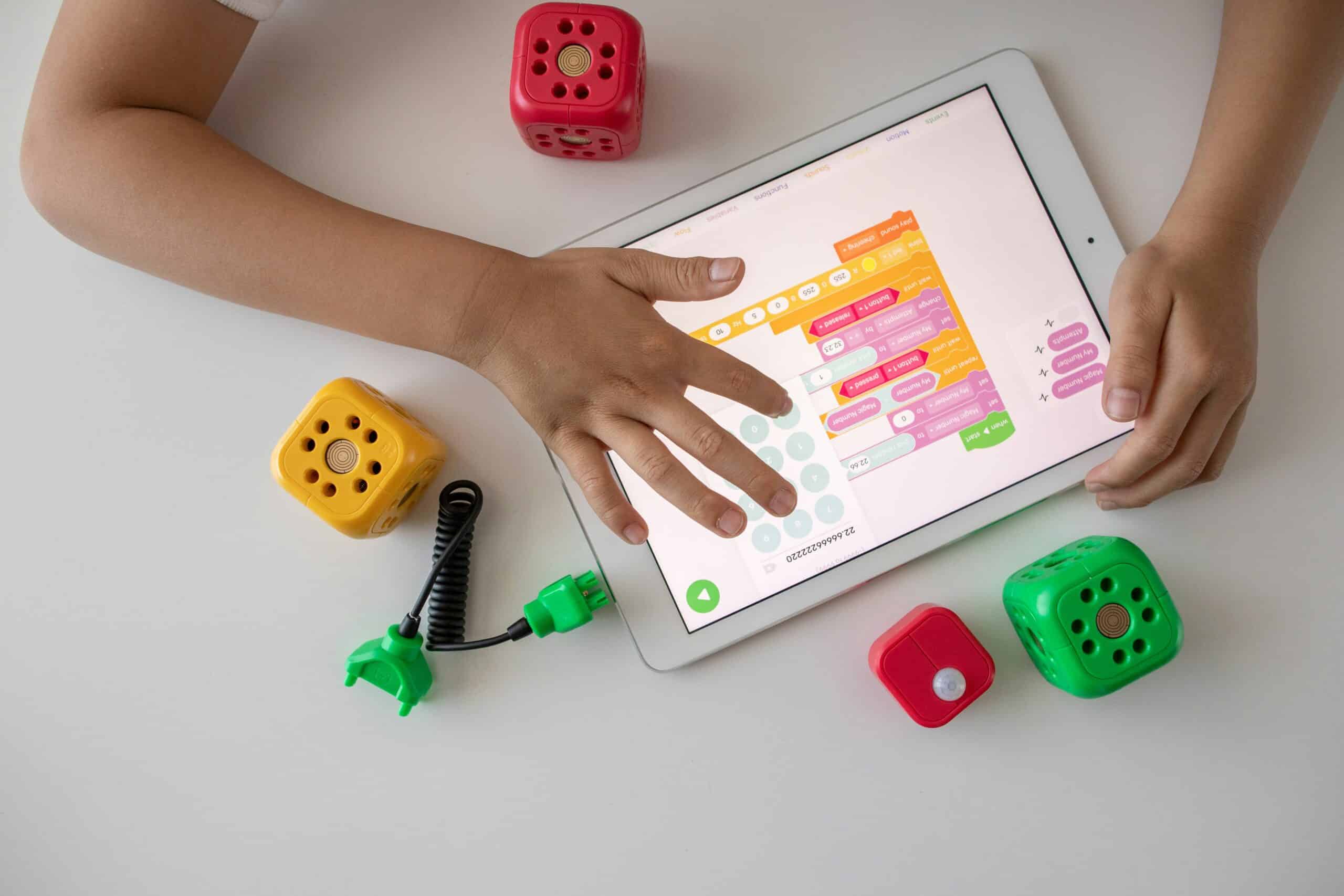
Photo of Robo Wunderkind on Unsplash
Advantages of early STEM support
- Use critical learning windows
A sense of quantity, spatial thinking and an understanding of cause and effect develop particularly easily before the age of ten. - Shaping the problem solvers of the future
Even today, 9 out of 10 top jobs require basic digital skills. - Preventing a shortage of skilled workers
The German labor market currently has a gap of around 209,000 STEM positions. - Closing the gender gap
According to the STEM Proficiency Study, ten-year-old boys are on average 15 weeks ahead of girls of the same age at school; early experiences of success with STEM toys cushion this.
Our 5 product favorites in detail
We have put together five product recommendations for the age groups from 3 years to 12 years. If you are giving your child a STEM toy, you should make sure not to overtax them and choose a suitable toy for their age group. You can also look at whether the child is more interested in free building (creativity) or structured sets (fixed methods).
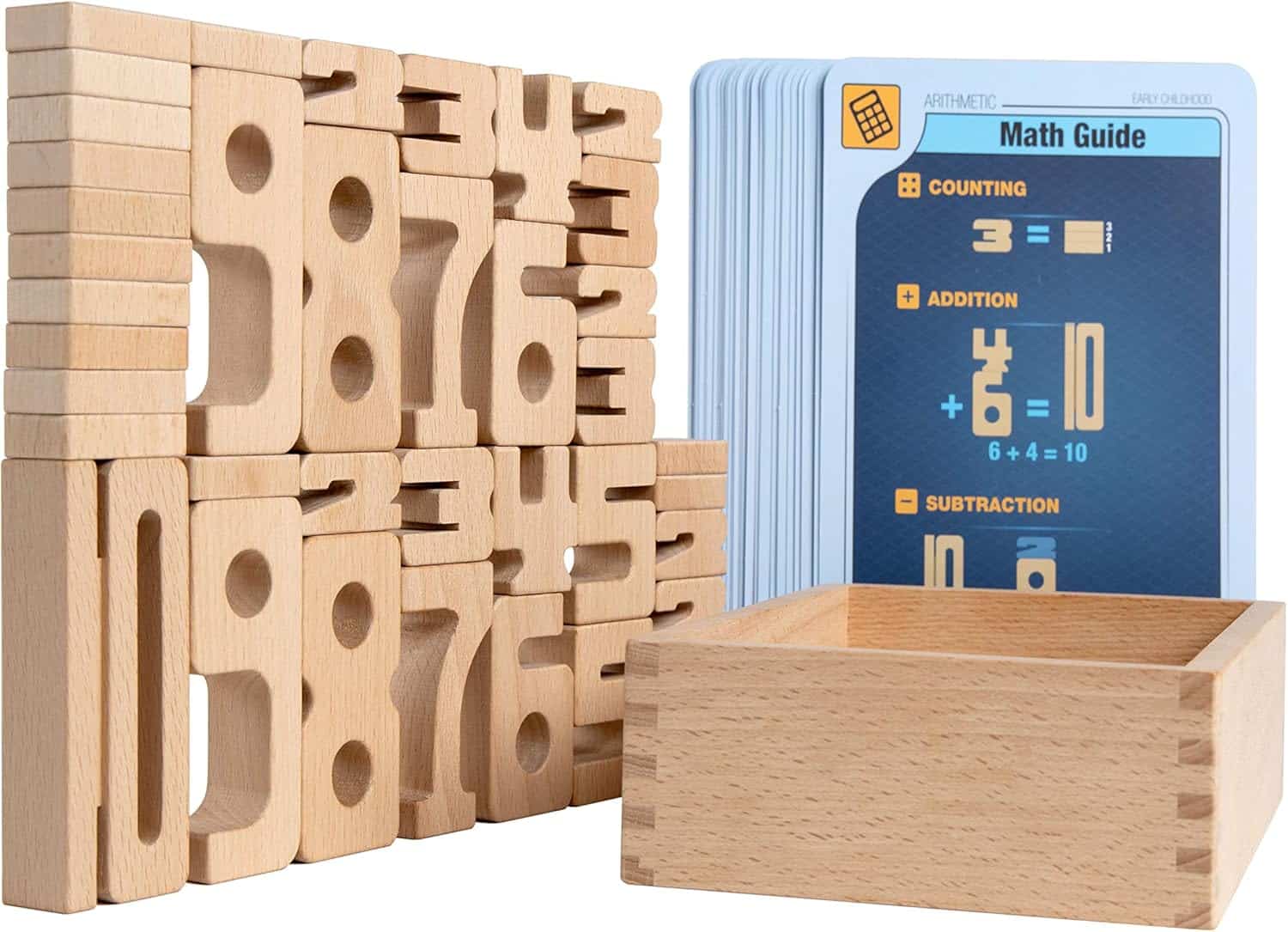
SumBlox Mini Starter Set
When three is actually three times as high as one, children can literally feel the numbers in their fingers. Instead of abstract symbols, colorful number towers grow upwards, and when two such towers are exactly the same size as a block of five, it clicks in their heads. The sound of the wooden blocks knocking against each other and the pride in the self-built math tower suddenly make math something tangible and emotional.
- MINT area: Mathematics
- Age: from 3 years
- Contents: 38 solid beech wood number blocks, 36 activity cards
- Learning goals: Linking numbers and quantities, first addition & subtraction
- Parent plus: Sustainable wood, indestructible, suitable for montessori
- Price: approx. 40 €
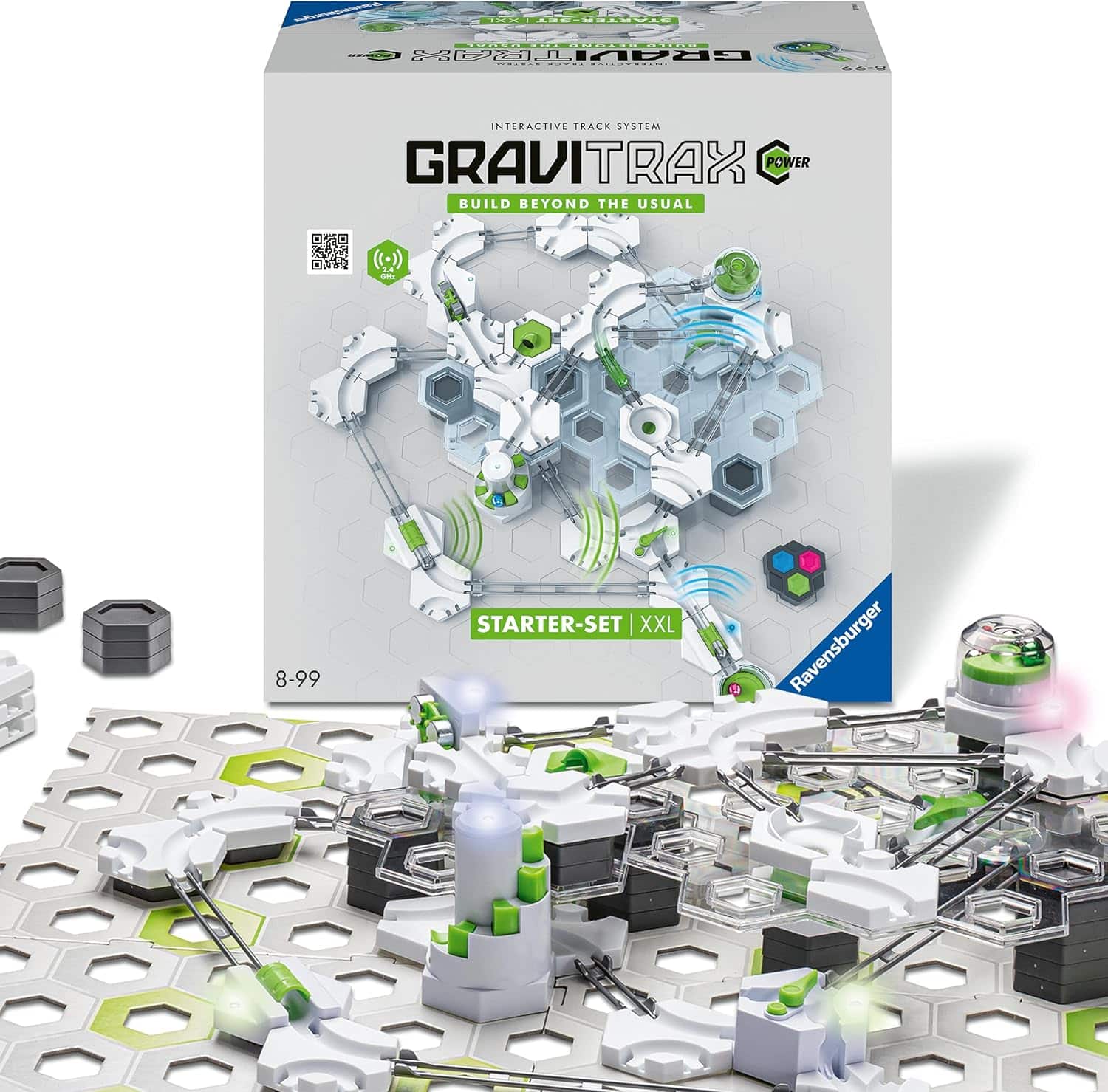
Ravensburger GraviTrax POWER Starter Set XXL
Here, every living room becomes a science center: Balls race over self-built roller coasters, elevators lift them up again, magnetic switches shoot them onto new tracks with a resounding "Clack!". When your child is trying to program an endless loop, they don't even notice that they are calculating incline angles and planning energy storage. And you'll suddenly find yourself wondering whether the ball will really make it all the way around the course.
- MINT area: Physics & technology
- Age: from 8 years
- Contents: 142 parts, including several electronic modules, radio remote control
- Learning objectives: Gravity, kinetic energy, magnetic force, cause-and-effect
- Parent plus: Fully compatible with classic GraviTrax tracks, expandable
- Price: approx. 170 €
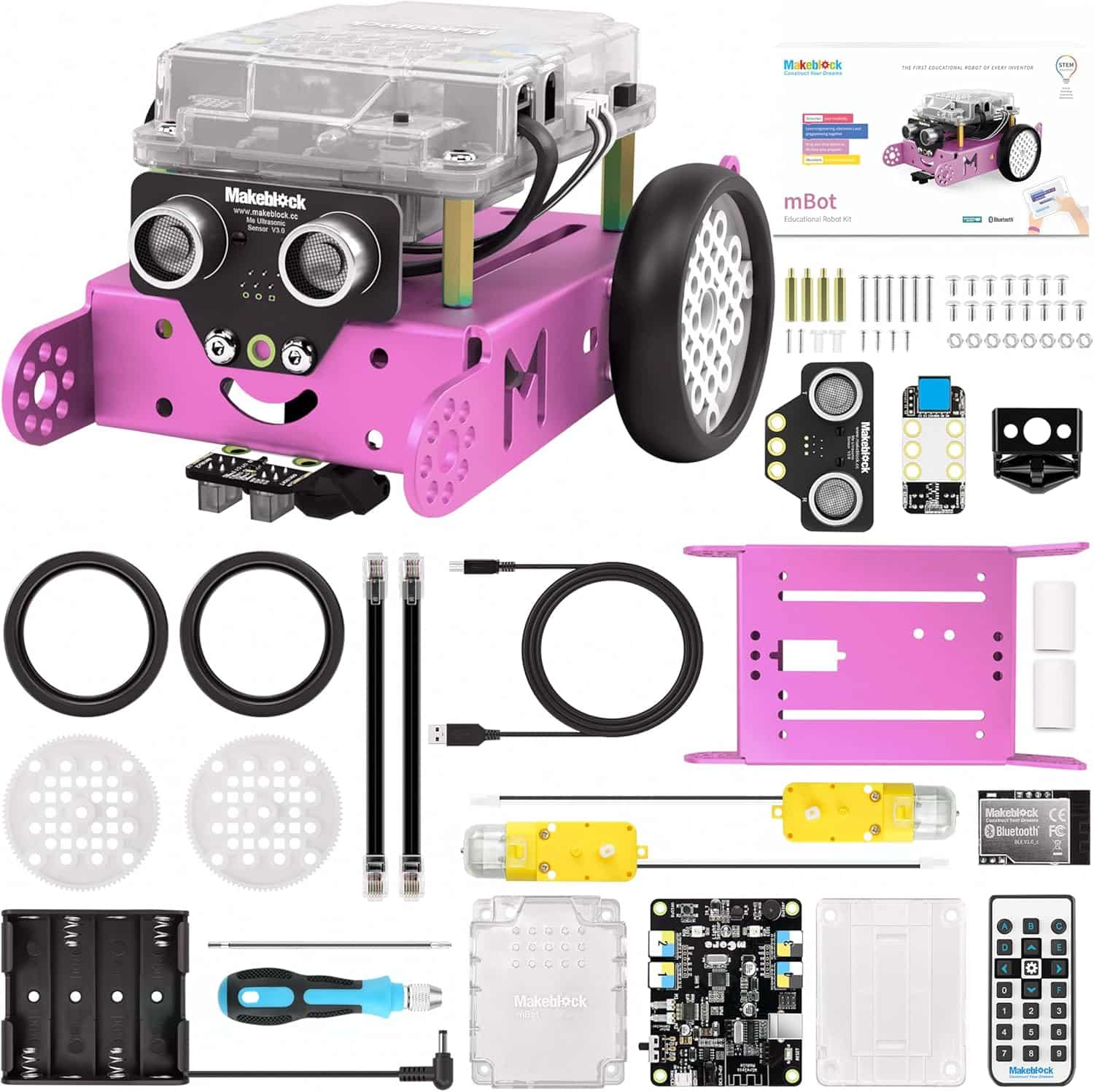
Makeblock mBot
The first moment in which the little blue speedster follows a drawn course according to its own code is pure children's cinema. The colorful Scratch blocks can be moved intuitively, yet there is real Python potential behind them. Whether line tracking, obstacle avoidance or voice control, every newly loaded routine triggers cheers when the robot does exactly what your child has planned. Mistakes are quickly declared as bug hunts and encourage perseverance.
- MINT area: Computer science / robotics
- Age: from 8 years
- Content: Driving robot with ultrasound and light sensor, Scratch and Python support
- Learning objectives: Sequencing, loops, sensor-actuator principle, first AI applications
- Parent plus: open-source platform, numerous add-on packs, tutorials at different learning levels
- Price: approx. 150 €
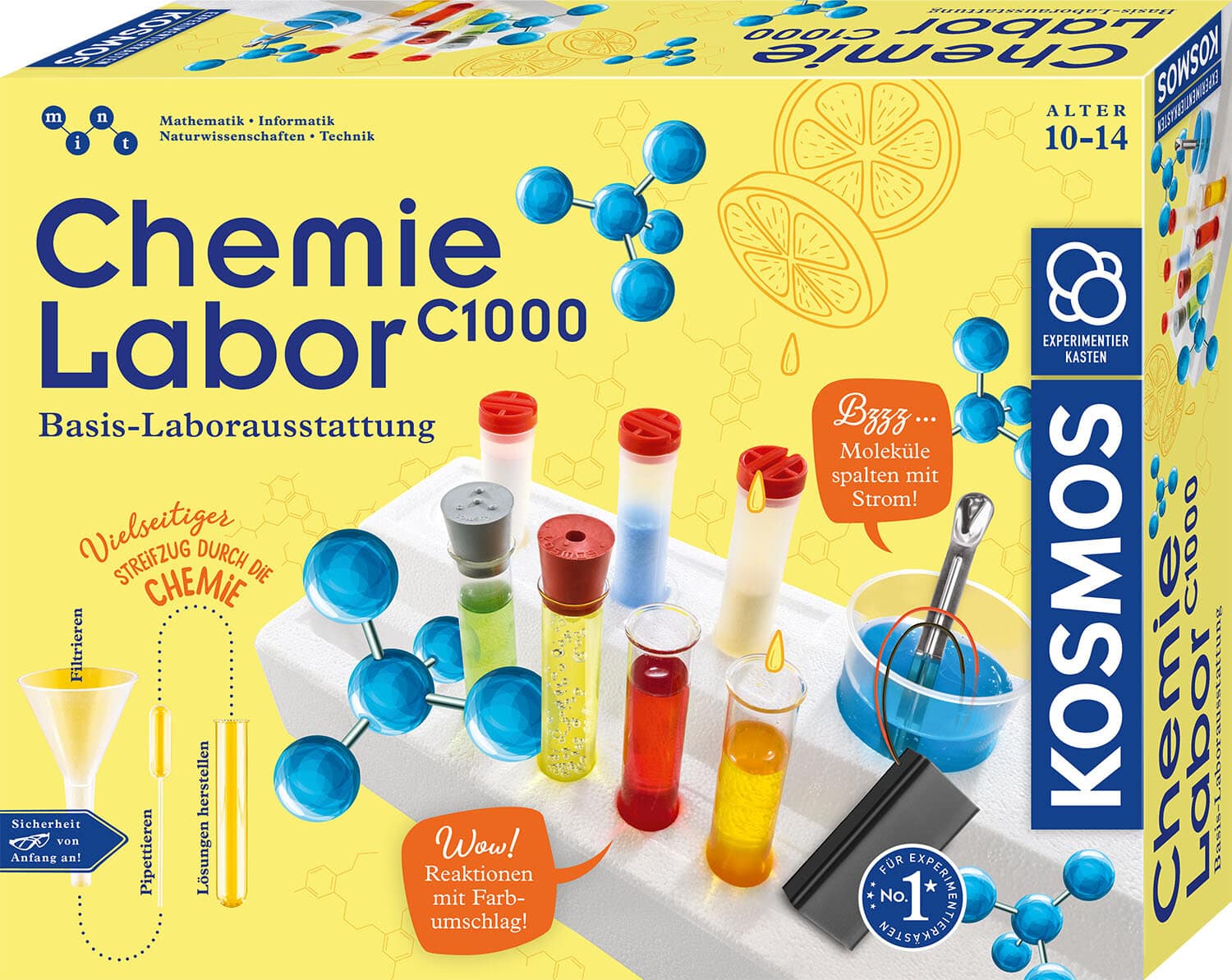
KOSMOS Chemielabor C1000
When blue copper sulphate crystals suddenly turn bright turquoise or mineral water reveals its gas bubbles, the children's room briefly feels like a research laboratory. The comprehensive manual guides you step by step without dampening the spirit of discovery. At the same time, the safety goggles make it clear: science is cool - but only if you take responsibility.
- MINT area: Chemistry
- Age: from 10 years (with parental supervision)
- Contents: Basic laboratory equipment with safety goggles, 7 chemicals, 4 heat-resistant test tubes, experiment station, 80-page manual with 125 experiments
- Learning objectives: Substance science, separation processes, color changes, laboratory safety
- Parent plus: Many experiments use household materials, spare parts service available
- Price: approx. 50 €

MatataLab Coding Set
Here, coding becomes a board game-like adventure: your child places colorful command tiles on a grid - the cute Matata robot executes the commands immediately. One step forward, turn, play a song: the immediate "aha" effect makes you want to play "One more round!". The first algorithms are created without a tablet or Wi-Fi, and the haptic blocks prevent screen fatigue.
- STEM area: Computer science / robotics (early learning)
- Age: 4 - 9 years
- Content: small robot, programmable control board, 37 coding blocks, story challenges
- Learning objectives: algorithmic thinking, sequences, loops, coordinates; optional music & art modules
- Parent plus: completely screen-free, robust, expandable with music and artist add-ons
- Price: approx. 200 €
Sources:
- STEM Report 2024: Skills gap of 209,000 people.
- OECD analysis 2025: Early childhood education as "cost-effective".
- STEM proficiency study 2023: Gender gap of 15 weeks of schooling for ten-year-olds.
* Links marked with an asterisk are affiliate links. We receive a commission from the online store when purchases are made via affiliate links.
